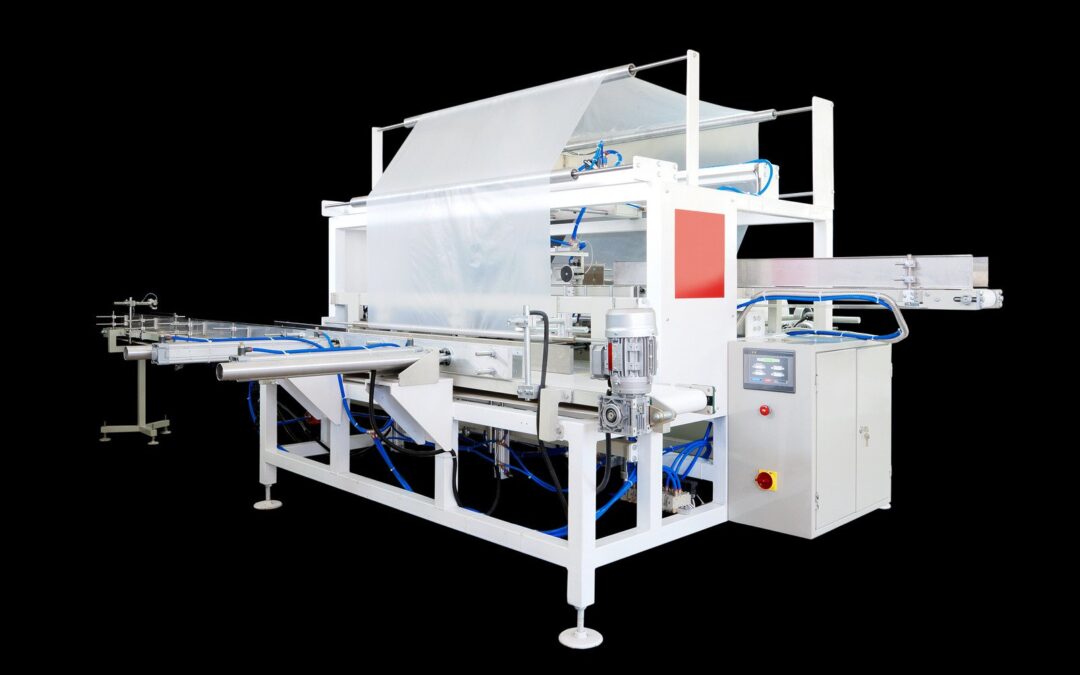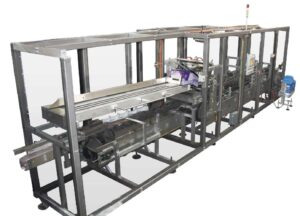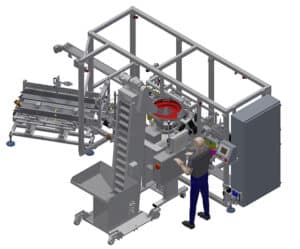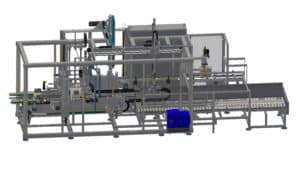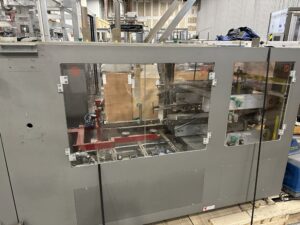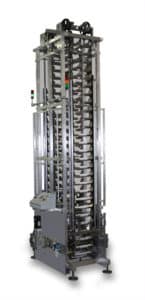Packaging machines are specialized equipment designed to prepare, pack, and seal products for distribution. Efficient packaging operations are the cornerstone of a successful business, especially in industries like food, pharmaceuticals, and consumer goods. The right packaging machines can drastically reduce downtime and boost productivity, helping businesses meet demand and improve profitability. In this blog, we’ll explore how different types of packaging machines work, their advantages, and how they contribute to operational efficiency.
1. Cartoners
Cartoners are machines designed to form cartons, insert products, and seal the packages. These machines are versatile and can handle various products like bottles, cans, and pouches. The process begins with a flat carton blank, which the machine folds, glues, and seals after placing the product inside.
Advantages:
- Speeds up packaging processes.
- Ensures uniformity and neat presentation.
Cartoners feature a conveyor system that moves the product to the insertion point. The carton blank is picked up, shaped, and sealed after the product is loaded, ensuring secure and consistent packaging.
2. Horizontal Cartoners
Horizontal cartoners specialize in packaging products that require horizontal insertion. This type is commonly used for products like tubes, bottles, and sachets.
Advantages:
- Ideal for products that need gentle handling.
- Efficient for high-speed operations.
Products are loaded onto a horizontal conveyor. The machine forms the carton, inserts the product horizontally, and seals it using adhesive or tucking mechanisms. This ensures the product remains secure during transit.
3. Vertical Cartoners
Vertical cartoners are designed for products that are best inserted vertically, such as jars, cans, or loose items like candies.
Advantages:
- Suitable for bulky or heavy items.
- Ensures precise placement within cartons.
The machine forms the carton, and products are loaded from the top. Sealing is done using glue or tape, providing a secure and durable package.
4. Case Packers
Case packers automate the task of placing products into cases for shipping or storage. These machines are ideal for large-scale operations, offering both speed and precision.
Advantages:
- Reduces manual labor.
- Improves packing speed and accuracy.
Products are arranged systematically, and the case packer loads them into pre-formed cases. The cases are then sealed, ready for transport.
5. Top Load Case Packers
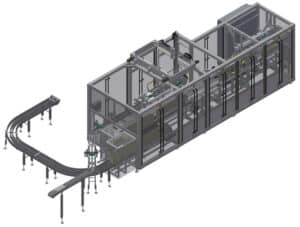
High-speed case packer for bottles. Speeds up to 900 ppm.
Top load case packers are designed for loading products from the top into cases. They are commonly used for fragile or irregularly shaped items.
Advantages:
- Gentle handling of delicate products.
- Flexible for various product sizes.
Products are conveyed to the machine, where robotic arms or automated systems place them into cases. The top is then sealed securely.
6. End Load Case Packers
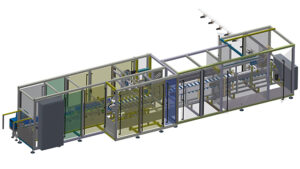
Cartoner for dryer sheets. Cartoning equipment
End load case packers insert products into cases from the side. These machines are ideal for packaging long or narrow items such as tubes or bottles.
Advantages:
- Efficient for high-volume production.
- Ensures a snug fit for products.
The machine forms a case, loads the product from one end, and seals the case using adhesives or tape. This ensures a compact and secure package.
7. Wrap Around Case Packers
Wrap-around case packers use a single sheet of cardboard to wrap around the product, forming a secure package. These are popular for beverage bottles and cans.
Advantages:
- Reduces material usage.
- Provides a tight and secure fit.
Products are grouped together, and a cardboard sheet wraps around them. The machine applies glue to seal the wrap, ensuring a durable package.
8. Tray & Carton Formers
Tray and carton formers create trays or cartons from flat blanks. These machines are used in industries requiring custom packaging shapes.
Advantages:
- Customizable for various shapes and sizes.
- Increases production speed.
Flat blanks are fed into the machine, which folds and glues them to form trays or cartons. The finished product is ready for filling or stacking.
9. Tray Packers
Tray packers are designed to load products into trays for storage or display. They are commonly used for products like beverages or food items.
Advantages:
- Perfect for retail-ready packaging.
- Ensures secure stacking.
Products are arranged on a conveyor, and the tray packer loads them into pre-formed trays. The trays are then sealed or wrapped for added security.
10. Palletizers
Palletizers stack products onto pallets for shipping or storage. These machines are essential for large-scale operations where manual stacking is inefficient.
Advantages:
- Reduces labor-intensive tasks.
- Improves stacking consistency.
Products are conveyed to the palletizer, which uses robotic arms or automated systems to stack them onto pallets. This ensures stability and maximizes pallet space.
11. Case Erectors & Sealers
Case erectors and sealers automate the process of forming and sealing cases. They are vital for industries with high packaging demands.
Advantages:
- Saves time and labor.
- Ensures consistent case formation and sealing.
Flat case blanks are fed into the machine, which erects them into shape. After products are loaded, the machine seals the cases using tape or glue.
12. Feeders & Denestors
Feeders and denestors separate and feed individual trays or containers into the packaging line. These machines are commonly used in food and beverage industries.
Advantages:
- Speeds up production lines.
- Reduces manual handling.
The machine picks up and places individual trays or containers onto a conveyor belt, ready for filling or sealing.
13. Product Accumulators
Product accumulators ensure a continuous flow of products in the packaging line. They act as buffers, preventing bottlenecks.
Advantages:
- Maintains smooth operations.
- Prevents downtime due to machine delays.
Products enter the accumulator, which organizes and holds them temporarily. This allows upstream and downstream machines to operate independently without interruptions.
Benefits of Packaging Machines
- Increased Speed: Automated machines work faster than manual operations, meeting high production demands.
- Consistency: Machines ensure uniform packaging, improving product presentation and reducing errors.
- Cost Savings: Reduced labor costs and material wastage result in long-term savings.
- Safety: Automated systems minimize manual handling, reducing workplace injuries.
- Scalability: Packaging machines can handle growing production needs without major upgrades.
Conclusion
Packaging machines are indispensable for businesses aiming to enhance efficiency, reduce downtime, and boost productivity. By investing in the right packaging machines, businesses can reduce downtime, maximize productivity, and achieve consistent product quality. Explore our range of high-efficiency packaging solutions and take the next step in optimizing your operations.
If you are looking for packaging solutions for your business, do contact AFA Systems for customized packaging solutions.

